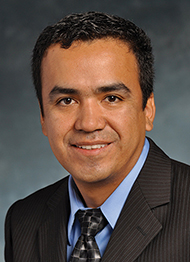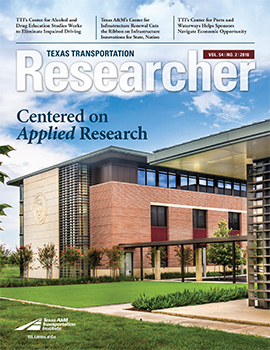For the international economy to thrive, economic development can’t stop at national borders. Facilitating growth requires moving goods efficiently from one country to another, which in turn requires a vital, robust transportation system.

In 2006, the Texas Legislature established the Texas A&M Transportation Institute’s (TTI’s) Center for International Intelligent Transportation Research (CIITR). Through applied research, the center encourages cross-border economic competitiveness while improving the quality of life in border communities.
Over the past 12 years, CIITR researchers have conducted groundbreaking research to address problems unique to the El Paso-Juárez region but that often have global significance. For example, El Paso’s projected growth from its 2010 Census population of 800,000 to 1.5 million by 2070 demands proactive approaches to mitigating problems that naturally arise, like traffic congestion.
“We apply technological innovations to troubleshoot congestion, improve mobility of people and goods, and mitigate air quality issues associated with growth on both sides of the border,” CIITR Director Rafael Aldrete explains. “Our overarching mission is to ensure security while facilitating mobility through innovative research solutions.”
The three research projects profiled here demonstrate why the center’s work is vital to the economic health of Texas and the nation as international trade continues to grow into the future. “But it’s more than intellectual curiosity that drives us to find those solutions,” Aldrete says. “El Paso is our home, too.”
REDUCING CONGESTION: Making Connections Across Travel Modes
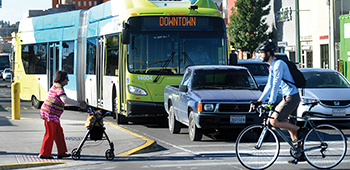
In El Paso, commuting at peak hours, like 8 a.m. or 5 p.m., can mean an hour sitting in traffic to travel 20 miles. The local metropolitan planning organization (MPO) is developing a multimodal plan promoting alternative travel modes (e.g., biking, walking or taking the bus) to help reduce congestion. CIITR researchers created a first-of-its-kind methodology to rate the relative benefits of each mode. The methodology provides for complete, multimodal trip-based evaluation, enabling the MPO to determine where gaps exist between modes and how to fill them. Beyond El Paso, any community wanting to find a multimodal solution to its mobility problems can adapt this methodology to meet local needs.
TIME IS MONEY: Better Estimating Wait Times at the Border
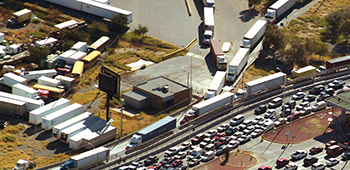
Knowing how long its trucks will take to pass through commercial ports of entry (POEs) is vital to any shipper’s business model. Until now, predicting freight crossing times simply hasn’t been practical due to disparate data sources and proprietary technology. Researchers created a website that supplies information from radio-frequency identification technology — currently present in most trucks — to measure border wait times. Deployed at seven Texas commercial POEs, this system provides agencies like U.S. Customs and Border Protection (CBP) with reliable wait-time estimates, enhancing security. Moreover, shippers can use these estimates to more reliably schedule freight, and that can mean a better bottom line for U.S. manufacturers.
“Our core mission at CBP is to secure the nation’s borders while facilitating lawful travel and trade,” explains Jim Pattan, program manager for Innovative Programs Acquisitions, part of CBP’s Office of Field Operations. “TTI’s multiple research efforts over the years to better estimate border wait times and improve the accuracy of monitoring lane status at land ports of entry provide us with tools to accomplish that mission faster, smarter and more cost-effectively.”
ENCOURAGING HEALTHY U.S.-MEXICO TRADE: Tracking Freight Traffic Trends
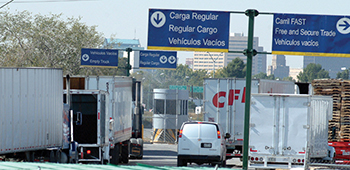
Since the mid-1990s, total yearly surface trade between the United States and Mexico has quadrupled from $100 billion to $400 billion. To help stakeholders better understand how freight moves between both countries via 25 land POEs, CIITR researchers identified freight traffic trends. One notable trend is the rate of increase of trade with interior states, especially Michigan and Illinois. Using these findings, manufacturers, shippers and policy makers can work together to move goods more efficiently, which can ultimately result in lower prices on store shelves for consumers.
